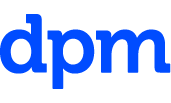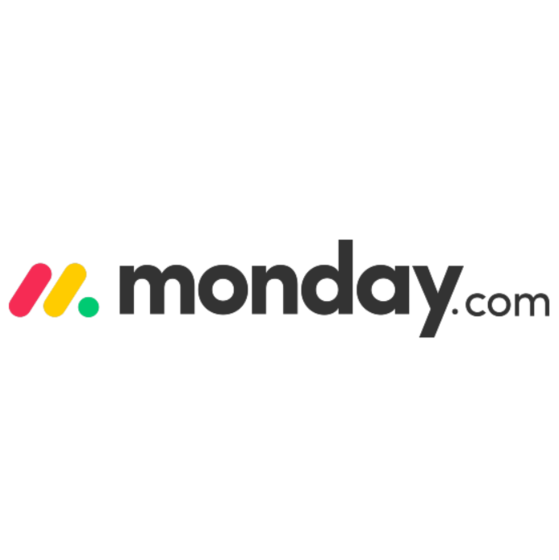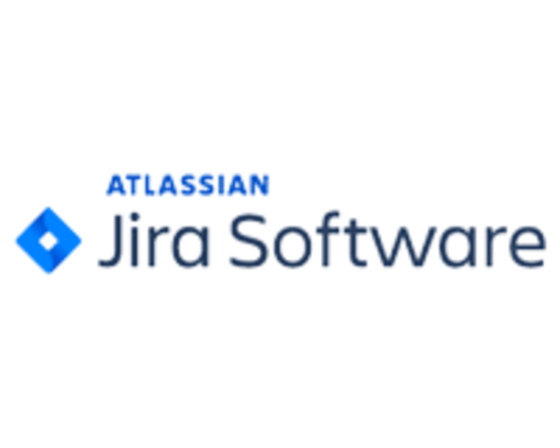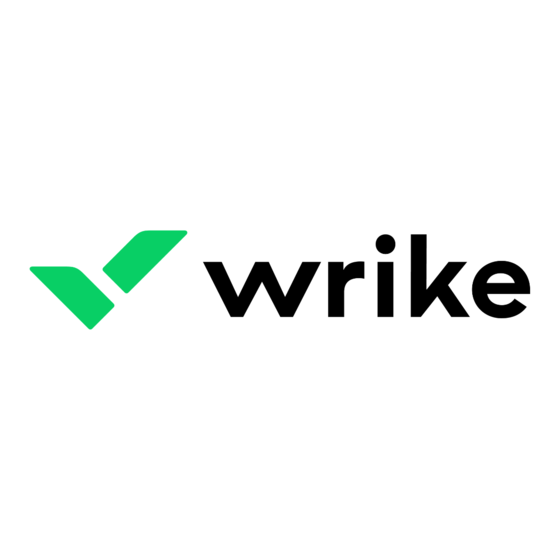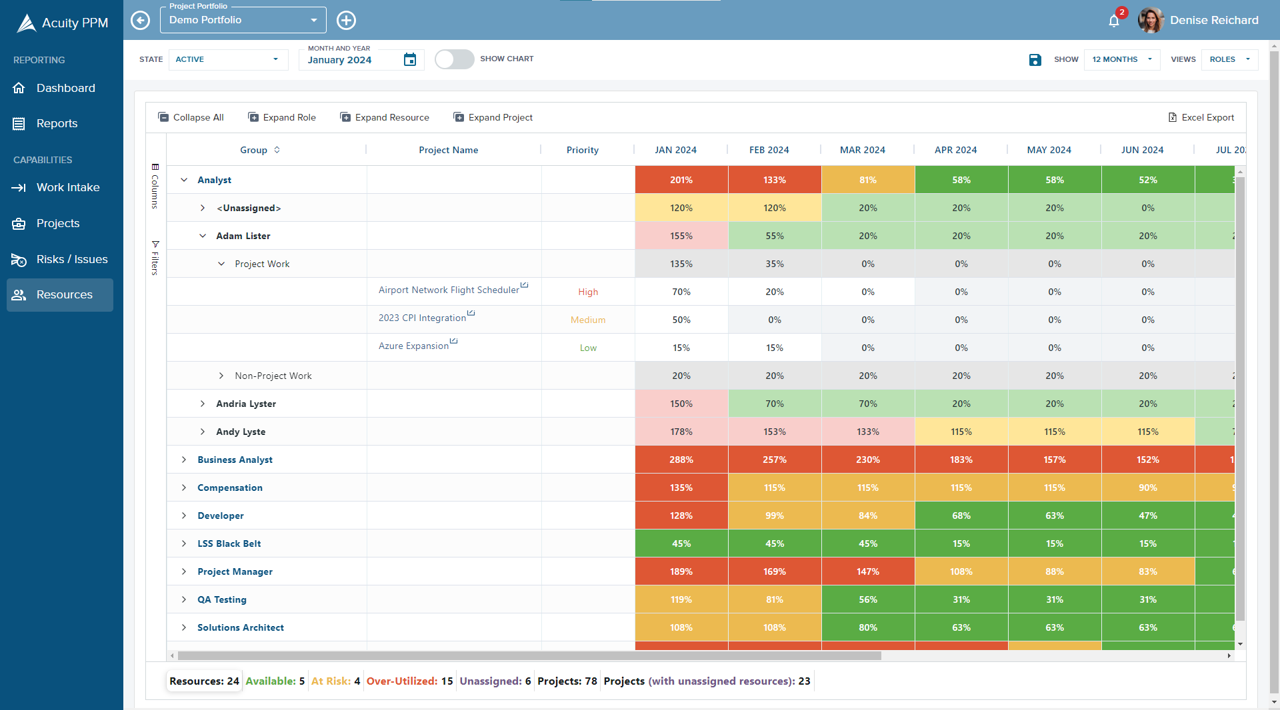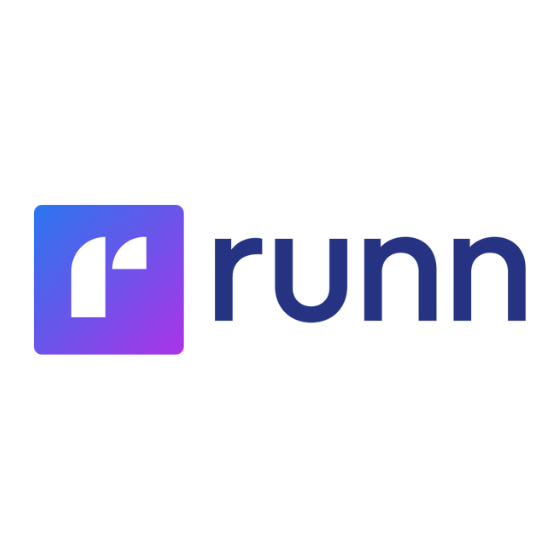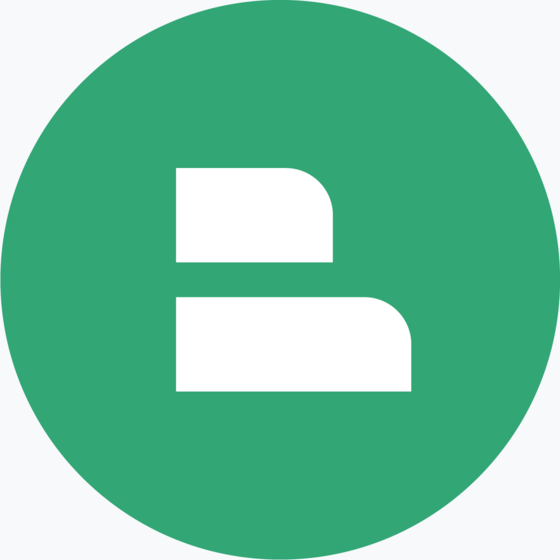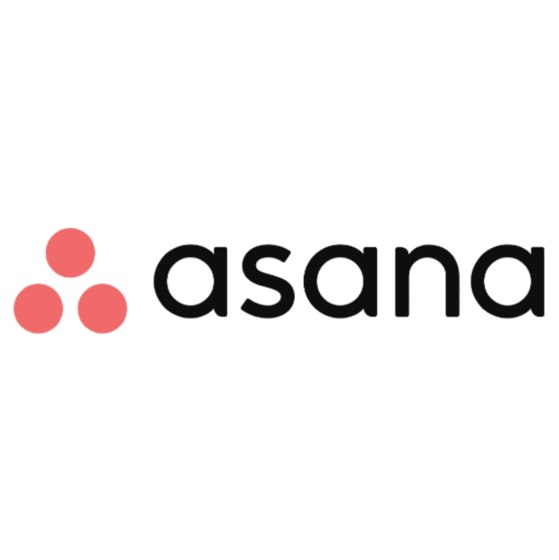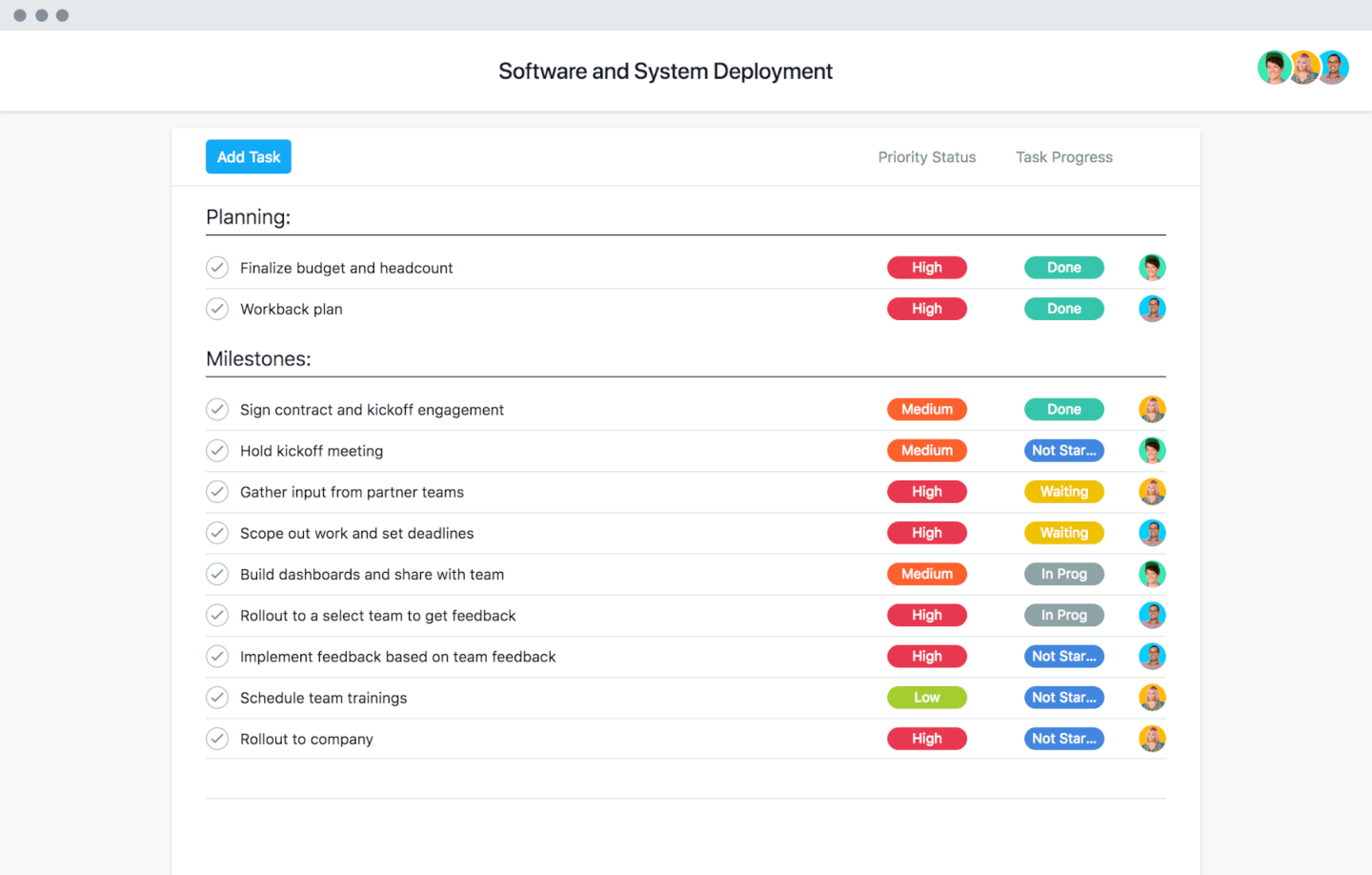10 Best Free Resource Management Software Shortlist
Here's my pick of the 10 best software from the 20 tools reviewed.
Get free help from our project management software advisors to find your match.
There are countless resource management tools that offer free trials and free versions of their software. However, figuring out which is right for you is tough. You know you want to effectively allocate resources based on skills, availability, and project requirements but need to figure out which tool will allow you to do it for free. I've got you! In this post I'll help make your choice easy, sharing my personal experiences using dozens of different tools with startups and small teams, with my picks of the best free resource management software.
What is free resource management software?
Free resource management software refers to tools that allow you to effectively plan, allocate, and optimize resources without incurring any cost for the software itself. These solutions are particularly valuable for small and medium-sized businesses, non-profit organizations, and startups with budget constraints.
Free resource management software typically includes features such as project scheduling, task assignment, time tracking, and collaboration tools, enabling you to streamline workflows and enhance overall productivity. While it may have limitations compared to its premium counterparts, it still offers valuable capabilities for teams seeking cost-effective solutions to improve their project and resource management processes.
Overviews Of The 10 Best Free Resource Management Software
Here’s a brief description of each of the free resource management tools on my list. I’ve included what each one does best, plus screenshots to showcase some of the features.
Wrike is an all-in-one platform that helps you with project management, organizing your work, and increasing collaboration among your team.
Why I picked Wrike: Wrike’s resource management features help you easily schedule and allocate resources for your projects. I particularly like the resource planning job role placeholders. You can use these to map time allocation to a position that you either don't have and need to hire, or you have but have not decided which resource to assign.
Besides the resource management features, Wrike is a powerful project management tool that helps you manage tasks, store files and marketing collateral, create approval workflows and much more.
Wrike's Standout Features & Integrations
Features include a budget monitor, drag-and-drop resource workload view, time tracker, templates, and placeholders.
Integrations include over 400 popular apps, like ADP, Airtable, BambooHR, Asana, Salesforce, Clearbit, Dropbox, Google Drive, Jenkins, and Mailchimp. Additionally, you can build custom integrations using universal connectors to apps with available APIs.
Acuity PPM is a lightweight project portfolio management software that helps organizations efficiently manage their resources and projects.
Why I picked Acuity PPM: It is a cloud-based platform that allows teams to collaborate, plan, and execute projects more effectively. Acuity PPM’s key feature is its ability to provide a centralized view of all project resources, including people, equipment, and finances. This allows project managers to allocate resources more effectively and avoid conflicts and overbooking. Its tools enable them to break down complex tasks into manageable steps, assign resources to specific tasks, and track real-time progress. The software also provides reporting and analytics tools to help teams track progress, identify issues, and make data-driven decisions.
Acuity PPM provides Gantt charts and task lists to help teams visualize and manage project timelines. It includes a resource scheduler that allows project managers to schedule and allocate resources and a timesheet module that makes it easy for team members to track their time and expenses. The software’s advanced algorithms allow users to identify which resources are best suited for specific tasks based on their skill set and availability and predict future trends based on historical data from past projects.
One of Acuity PPM’s unique features is its focus on portfolio management. The software provides a portfolio dashboard that allows users to view all projects and resources in a single view. This makes it easy for organizations to prioritize projects, manage budgets, and ensure that resources are used effectively across the organization. Acuity PPM’s data analysis and reporting features allow users to quickly generate insightful reports about their projects and resources at any given time. These reports provide detailed insights into project costs, timelines, and resource utilization levels—allowing users to make informed decisions about their projects at every step.
Acuity PPM Standout Features & Integrations
Features include work intake to help control incoming work, resource plan, over-allocation indicators, project scoring and status, and portfolio tracking.
Integrations with external apps are done through the make.com platform and include Jira, Smartsheet, monday.com, Asana, Wrike, and ClickUp.
Runn is a free resource management software platform that enables businesses and organizations to manage their tasks, projects, and resources more efficiently.
From project planning to budgeting and tracking, it simplifies the process of resource management with its intuitive design. The software allows users to create custom templates for project plans and assign resources accordingly. This makes it easy for teams to stay organized and on track with tasks. The drag-and-drop feature also makes it easy for users to quickly adjust schedules if needed. Additionally, Runn integrates with Clockify, WorkflowMax, and Harvest, which means users can easily sync their data between different platforms without having to enter all information manually. The free version provides up to 5 people managed with unlimited users and projects, making it an excellent choice for smaller teams.
They offer robust tracking capabilities specifically for managing resources. Users can easily track how resources are allocated across different projects as well as how much time is being spent on each one. This helps teams get a better understanding of where they need to focus more attention in order to best utilize their resources. Its budgeting feature allows users to set spending limits on individual projects or team members so they don’t go over budget when managing projects or tasks.
Runn provides real-time reporting capabilities that allow users to monitor progress without having to wait until the end of the project or task cycle to assess performance results. This helps teams stay on track with deadlines by providing quick feedback on performance so changes can be made quickly if needed. The software also offers analytics capabilities that provide insights into overall performance trends so teams can identify any potential issues early on before they become bigger problems down the line. This information is invaluable when making strategic decisions about how best to allocate resources to maximize efficiency and productivity across the board.
Best resource management software for project-based businesses
Hub Planner is a cloud-based resource management software that enables you to manage your team's schedule, workload, and time off in one place.
Why I picked Hub Planner: Mainly its user-friendly interface and the flexibility it offers in terms of customization. Unlike some of the other resource management tools that are overly complex, Hub Planner makes it easy for you to plan and allocate resources based on your business needs. The ability to track and monitor the capacity and utilization rates of your team members in real-time will help you to better manage the team's workload and schedule.
The capacity planning tool provides insights into your team's workload and helps you to identify any potential over or underutilization issues. This feature is particularly useful for businesses that rely heavily on project-based work or that have a large number of employees.
Hub Planner Standout Features & Integrations
Features include resource management, PTO planning, timesheets, reporting, skills matching, task management, templates, drag and drop scheduler, project budgets, approval flow, smart scheduler, and third-party integrations/add-ons.
Integrations include DIY options via the Hub Planner API and webhooks. Additionally, you can access thousands of apps using a Zapier account.
Asana is a popular project management platform for cross-functional work.
Why I picked Asana: It has a free plan that contains much Asana has to offer, although you miss out on some of the more advanced features, like workload management. With workload, you can quickly assess how much bandwidth your team has, assign new work using drag-and-drop functionality, and balance schedules based on workload graphs.
Additionally, you can create unlimited projects and tasks and then assign them to up to 15 employees. It’s easy to assign due dates to each task so everyone knows when work needs to be done. Moving tasks around is easy thanks to the simple drag-and-drop interface.
You can create task dependencies so the right people are notified when work needs to be done. And managers can get an overview of projects in the relevant dashboard, as well as see work in both calendar and list views.
Asana Standout Features & Integrations
Features include unlimited dashboards, approvals, proofing, time tracking, a workflow builder, goal management, and reporting across unlimited projects.
Integrations include over 100 different apps including Microsoft Teams, Slack, and most G Suite products. If you need more functionality, pricing for paid plans starts at $10.99 per user per month.
Caspio is a no-code platform for business applications where you can custom-build apps to support your projects.
Why I picked Caspio: It lets you list the assets you want to manage alongside information about each one. People search for the asset they need, check the resource availability, and then schedule or reserve it. This will then update the resource’s availability.
The process happens automatically, so you don’t have to approve each reservation manually. And you even get to see basic metrics around usage history to measure the popularity of each asset. The program supports point-and-click app building to create DIY forms, reports, charts, and calendars.
Caspio offers 5 free 'DataPages,' which encompasses things like forms, reports, charts, search queries, and drilldowns. You are limited to 50,000 data records on the free plan. You'll be allowed unlimited users on your free account.
Caspio Standout Features & Integrations
Features include calendars, scheduling, custom web forms, interactive reports, workflows, automations, and powerful dashboards.
Integrations are available through built-in connectors and third-party software Make and Zapier. These last two makes it possible to connect to over 5000 apps.
Bitrix24 is a free online workspace for your team to collaborate and do more than just project management-related work.
Why I picked Bitrix24: It has a ton of features like a CRM, website builder, online storage, HR perk features, and more that help teams work together.
The free plan comes with basic task and project management tools that you can use when making project plans. These include the ability to create projects and then delegate tasks. You can set deadlines, add task dependencies, and view all your projects in kanban and calendar views. It’s also possible to see all overdue tasks and projects with a single click, so you can focus on getting this work done.
The tool comes with time-tracking functionality. Although with the free plan you have to do this manually. You can also add unlimited users to your workspace, even on the free plan. Although you only get 5 GB storage.
Bitrix24 Standout Features & Integrations
Features include basic CRM features that allow you to have one pipeline, contact centre capabilities by connecting your social accounts and receiving messages directly in Bitrix, and videoconferencing for up to 48 people.
Integrations include over 100 third-party integrations in the on-premise edition of the software. Additionally, there is an API you can use to build custom integrations with your existing tech stack.
GoodDay is a work management platform with a free plan that provides access to the tool’s work management modules for up to 15 users.
Why I picked GoodDay: The free plan has plenty of time tracking features so you can see precise information about how long a task takes. Weekly timesheets collate this information to estimate how long your team spent on a particular task. There’s even an AI engine that analyzes time spent on specific work without your team having to report it.
The tool also has a calendar (which syncs with Google calendars). This shows all your organization’s important events and deadlines—which helps with project planning. Unfortunately, the free plan misses out on advanced planning features like Gantt charts.
Task management is a big part of the software. You can plan unlimited projects and assign them to relevant people. It is easy to create custom workflows and projects by adding tags, checklists, and custom fields to ensure everyone knows what they are doing.
GoodDay Standout Features & Integrations
Features include customer portals that let you invite customers into your projects and give them access to selected views. I also want to highlight Big Screens. This feature lets you select the screens within GoodDay that you would like to share with the team and create a loop that can be displayed on big screens around the office.
Integrations include Gmail, Slack, Google Docs, Google Drive, Dropbox, GitHub, Box, and GitLab. Integrations through a third party are available with Zapier, although you will need a paid account for this. Finally, the GoodDay API will let you build custom integrations with your favorite tools.
Cirkus is a scheduling and collaboration software that has a free plan for up to three team members that gives access to many of the tool’s features and 1 GB of storage per member.
Why I picked Cirkus: The tool lets you create unlimited tasks and projects. You can create subtasks to break your work down into more manageable chunks.
There are plenty of features that help you get to work quickly. For example, reusable project templates help you set up the tool whenever you have new work. Or you can create recurring tasks to ensure that regular work always gets done.
Cirkus Standout Features & Integrations
Features include scheduling for your team, resources, and equipment, time reporting, custom templates and fields, task request workflows, and apps for multiple platforms.
Integrations include farmerswife, which lets you do all the resource scheduling within the tool. Additionally there is a Zapier integration you can use to connect to thousands of additional apps.
Dovico is a cloud-based time-tracking software that helps you track the time you and your team spend working on projects. This ensures you can accurately bill clients at the end of the period for work done and gives you better visibility into where your team spends its work hours which helps with resource utilization.
Why I picked Dovico: The employee management features include the ability to assign employees to tasks and projects. You can then get a summary of how a project is progressing in the dashboard. There’s even a feature that projects how much a project is likely to cost so you can see its expected profitability and plan accordingly. It’s also possible to track both billable and nonbillable hours which helps with invoicing.
Submitting and accepting timesheets is easy due to automation. Just set up workflows to accurately review and accept time entries. When an employee submits one they are automatically sent to an approving manager who can review the request and then accept, reject, or edit it.
Dovico Standout Features & Integrations
Features include time lockout, receipt attachments, leader approvals, timesheet consolidation, custom notifications, and reporting.
Integrations for this software are only available through Zapier. Therefore, to access these integrations, you need a paid subscription with this third-party vendor.
Best Free Resource Management Software Comparison Chart
Here’s a brief description of each of the free resource management tools on my list. I’ve included what each one does best, plus screenshots to showcase some of the features.
| Tools | Price | |
|---|---|---|
| Wrike | From $9.80/user/month | Website |
| Acuity PPM | From $599/month | Website |
| Runn | From $10 /person managed/month | Website |
| Hub Planner | From $7/user/month (billed annually) | Website |
| Asana | From $13.49/user/month | Website |
| Caspio | From $140/month | Website |
| Bitrix24 | From $49/month (5 users) | Website |
| GoodDay | From $6/user/month | Website |
| Cirkus | From $30 per member per month. | Website |
| Dovico | From $8 per user per month | Website |
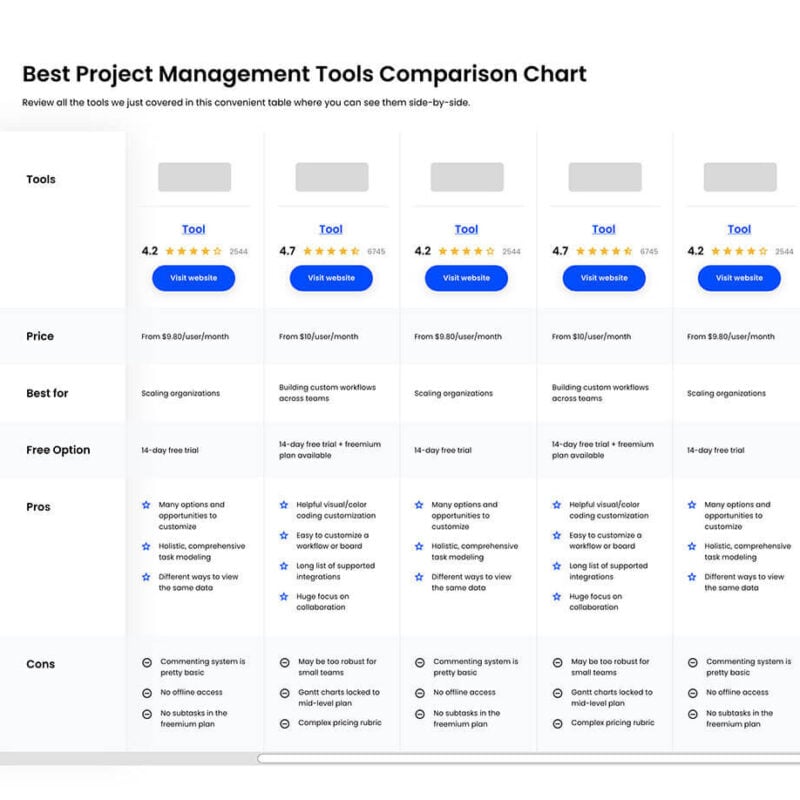
Compare Software Specs Side by Side
Use our comparison chart to review and evaluate software specs side-by-side.
Compare SoftwareOther Options
Here are some tools that did not make it to the top 10 but are worth your consideration.
- Sinnaps
Best for time management
- ClickUp
Best for unlimited tasks and members
- Productive
Best for agency resource management
- Jira Software
Best for software development teams
- Zoho Projects
Best with project collaboration features
- eResource Scheduler
Best for scheduling and financial management
- Teamwork.com
Best for accurate resource forecasts
- Resource Guru
Best for its user-friendly interface
- Smartsheet
Best for its real-time information to help you select the right resources
- Ganttic
Best for project visibility
- Float
Best resource management software for capacity management
- TeamGantt
Best for Gantt charts
- Mavenlink
Best for professional services project teams
- Toggle Plan
Best for time tracking
How I Picked The Best Free Resource Management Software
Let me explain how this whole process went down. First, I evaluated and compared the most popular resource management tools on the market, both for their reviews and user interface. Then I took that initial list and weighed factors that make software a good free option, such as the following ones.
User Interface (UI)
All the resource planning tool options on this list are either free versions of paid software or free tools. This means they look great and have the same premium UI as the pro version. A good user interface will help you quickly identify and access features, making you more productive.
Usability
Resource planning software streamline and simplify how you use resources. But this isn’t much good if the tools themselves are difficult to use. Therefore, I look at the options available for you to master the tool. This includes knowledge bases, training, videos, and user support.
Integrations
An all-in-one resource management solution often includes a way to connect to external software. Most of the tools on this list offer plenty of pre-built integrations and connections through third-party software. I also look for ways in which you can connect with to other project scheduling tools using an API or webhooks.
Completely Free Plan
Most tools on this list have a plan that is completely free to use without a time limit. As long as you stay within limits around users, tasks, and storage, you can use them forever without paying a cent. However, I’ve also included great tools with free trials in case you want to compare free vs paid tools.
Free Resource Management Software FAQs
Find answers to common questions other people ask about this topic.
What is resource management software?
Resource management software are tools that help you manage your business’s resources. They typically focus on employees, although some products help you with assets such as machinery, equipment, and real estate. Most of the tools use a SaaS model, and many have free versions.
Learn more about the use cases of resource management software here.
What is the best resource management software?
The best resource management software is the one that helps you make the most of your current resources. For some teams, this means employees who are members of project teams. For others, this includes freelancers and other external contributors.
Try to find a tool that lets you look at all those resources important to you in one place. In this list of the best resource management software we have many options you can consider if you are ready to make the jump to paid tools.
What key features should I look for in resource management software?
Most resource management software has similar features. But as the tools on this list are free, you’re unlikely to get access to them all. When choosing software, consider which features are most important to your team and prioritize them.
- Task management: Resource management software tends to have task management functionality. This can include the ability to create tasks, assign them to team members, set dependencies, and create subtasks. It’s perfect for remote teams.
- Project tracking: Tracking gives a complete overview of how a project is progressing. You can track all the tasks within a particular project and how much time and money you have spent on each one.
- Multiple views: Gantt charts, calendar views, and kanban boards all provide insight and visibility into the work your business is doing. This helps you manage project resources more effectively.
- Time tracking: Some of the tools on this list help employees track the time they spend on a particular project. Other tools integrate with time-tracking software to get the same functionality.
- Projections: Projections and forecasting estimate the resources that are required to complete a project. This can show if a project is on track or running over budget.
What are the benefits of resource management software?
Using resource management can provide multiple benefits. However, I will highlight six.
- Displays Current Resource Allocations
- Determines True Resource Capacity
- Tracks Resource Utilization
- Predicts Future Resource Availability
- Reduces Unnecessary Downtime
- Improves Hiring Decisions
Learn more details about the benefits of using resource management.
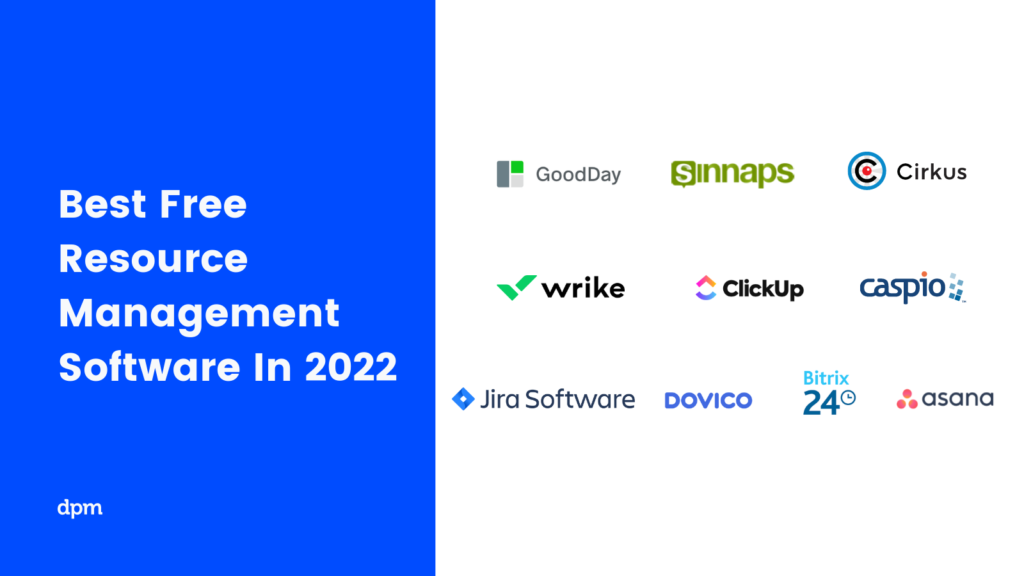
What's Next?
Knowing the wonders that tools can do nowadays, I encourage you to keep reading on the topic. We have an excellent article on how to master resource management tasks as a project manager. Also, the steps you need to take to build a kick-ass resource management plan.
Related tool lists:
- Resource scheduling software
- Resource management software for agencies
- Best Project Management Calendar Tools For Scheduling
Sign up for the newsletter for the latest insights from top project management experts.
